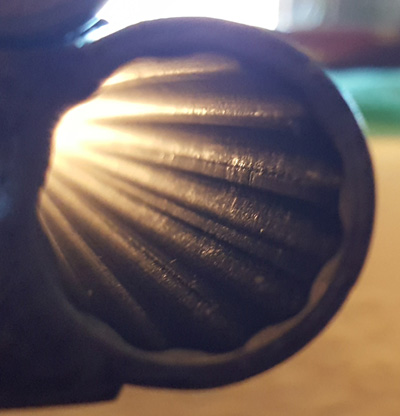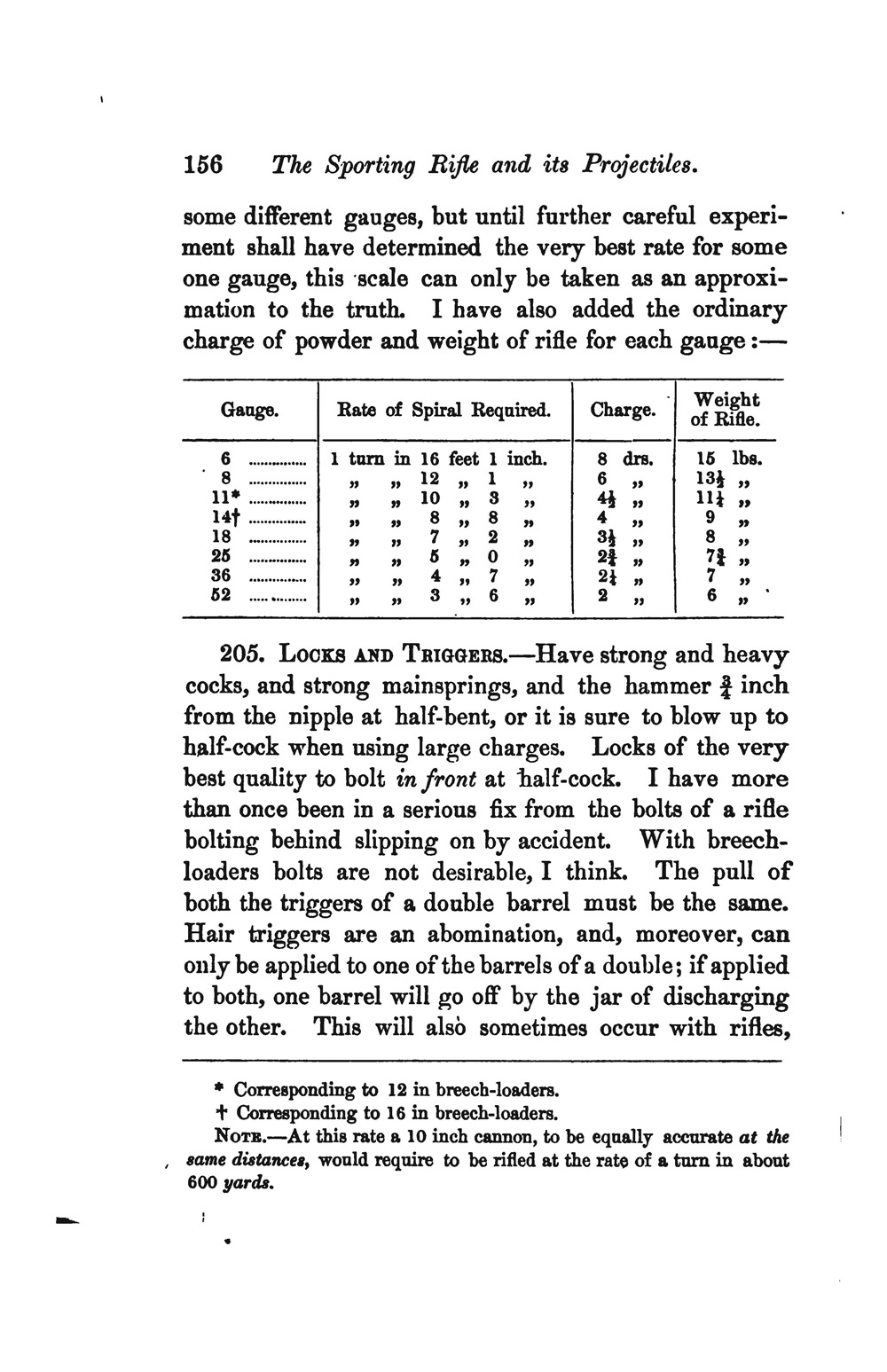CptCurl
|
| (.450 member) |
| 02/12/17 11:13 PM |

|
|
|
An update.
Last week I spent an afternoon casting some much needed bullets. I was nearly out of the .450 bullets I use in my .450 3-1/4" BPE Holland & Holland double and Henry single shot. But I also cast a good bunch of 16b balls.
The Pratt double came with a modern 16b ball mould. It casts a fine round ball for this rifle. I laid in a fairly good supply.
With loading supplies in hand I ventured to the range this past Sunday - November 26. Making a guess, I decided to try 3 drams (85 grains) of GEOX 2F.
The rifle has wonderful bores. Here are a couple of photos.

Right barrel.

Left barrel.
Notice that the tops of the lands are square and sharp. The grooves are "U" shaped - no corners in the grooves at all. There are 11 grooves. This geometry says to me that the rifle was made to shoot a patched round ball.
You can see some etching of the damascus structure visible in the very oblique light of my photos, but there are no corrosion pits or other blemishes at all.
Optimistic that the rifle would like my newly cast balls, I loaded her up. Here she is loaded and capped with the first two loads by my hand:

My balls measure 0.658". I used 0.015" thick pillow tick cloth for my patches. It was generously lubed with BP bullet lubricant. The ball and patch made a tight fit and loaded well.
At 50 yards I let fly with a right and a left. The right printed slightly above the left. I loaded her again and sent two more balls down range. Again, the right printed slightly above the left. Here's my very first target. In the bottom left corner I drew a legend to identify my individual shots.

In my mind I was seeing fairly good success. With a bit of fine tuning I felt the barrel groups could be brought to the same elevation, with good regulation. So which way to go? In the interest of conservative loading practice I decided to try slightly lighter loads.
For the next hour or two I loaded successively lighter charges. All the while I observed the vertical dispersion increasing. Of course, by the end of this I deduced the old girl probably wanted a little heavier charge. But the day was then done, so I cleaned her and took her home. I felt pretty good about the day's shooting.
Reflecting on my results I couldn't help but wonder, "What was the 'normal' load for a 16b muzzleloading round ball rifle?"
That evening I got my good friend Watson577 on the phone. He's an encyclopedia of knowledge. I told him about the day's shoot and asked whether he knew of the "normal" charge for a 16b back in the day. He thought for a moment and then said, "There's a book by James Forsyth titled The Sporting Rifle and its Projectiles. You can download it from Google Books. I believe toward the end of that book he has a chart with exactly that type of information."
I downloaded the book and quickly skimmed through it. Sure enough, on page 156 is a chart with exactly the general information I was wanting.

Pay attention to the footnote. Forsyth refers to the muzzleloader I have as a 14b, with a notation that in a breech loading rifle it would be designated a 16b. He states the normal charge to be 4 drams in a 9 pound rifle.
This information confirms the deduction I had already made. The old girl wants a little more coal. For my next trip to the range I will try incremental increases from 3 drams up to 4 drams (maybe up to 4-1/4 if it seems necessary). Stay tuned!
Curl